Cherry Blossoms 2014: Gunma Report (4/9)
| Cherry Blossom Report 2014 Official cherry blossom reports by japan-guide.com |
| previous post |
| next post |
2014/04/09 - Gunma Report
by scott
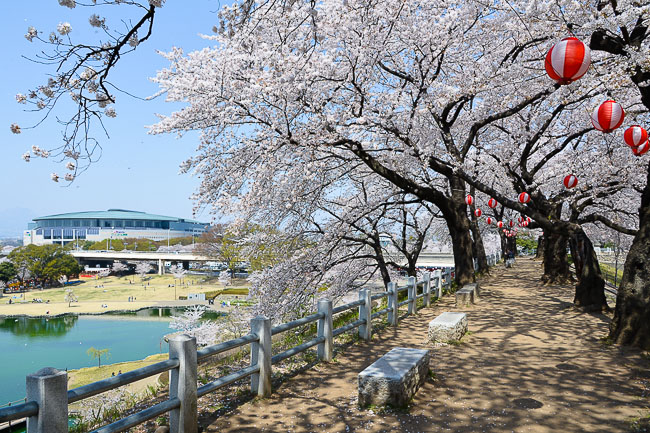
As the regular season comes to a close around Tokyo and Kyoto, Schauwecker and I headed out to check out Gunma Prefecture. Located at the base of the mountains about an hour north of Tokyo, the cherry trees around Gunma typically bloom about a week after those in the capital. Two of the prefecture's main cities, Takasaki and Maebashi, are within easy day trip distance and have several nice spots for those that are too late to see the blossoms around Tokyo.
Takasaki lies on the Joetsu Shinkansen from Tokyo, and is connected by frequent, direct trains that make the trip in about an hour and cost 4410 yen by unreserved seat. Alternatively, it takes about 100 minutes and costs 1940 yen by local trains departing from Tokyo's Ueno Station. Maebashi is located an additional 15 minutes further by local trains on the JR Ryomo Line. All of the trains mentioned above are fully covered by the Japan Rail Pass, JR East Pass and JR Kanto Area Pass.
Takasaki Kannonyama Park
April 9, 2014 - petals starting to fall
Our first stop of the day was to Takasaki Kannonyama Park, a large, forested park in the mountains west of the city center. Its main attraction, and a symbol of the city, is the 42 meter high statue of Kannon, the Buddhist goddess of mercy, which overlooks the city from the top of the mountain. Visitors can enter the statue (9:00-17:00, 300 yen) and climb up to an observation deck inside the statue's chest.
There are around 3000 cherry trees around Kannonyama, which are spread out in clusters around the statue, temples, shops, restaurants, roads and trails around the park. There are a few dozen cherry blossoms around the statue itself, which looked as if they were just starting to drop their petals this morning. Another large group of several hundred cherry trees line the slope below the parking lot south of the statue, creating lots of nice spots where you could have a hanami party while looking out over the city below. The blossoms in this area were swirling into cherry blossom storms (hanafubuki) every time the wind picked up.
Takasaki Kannonyama Park can be reached by Gururin Buses from the west exit of Takasaki Station. The buses depart every 80 minutes, take about 25 minutes to reach the statue (Byahui Dai-Kannon bus stop) and costs 200 yen one way.
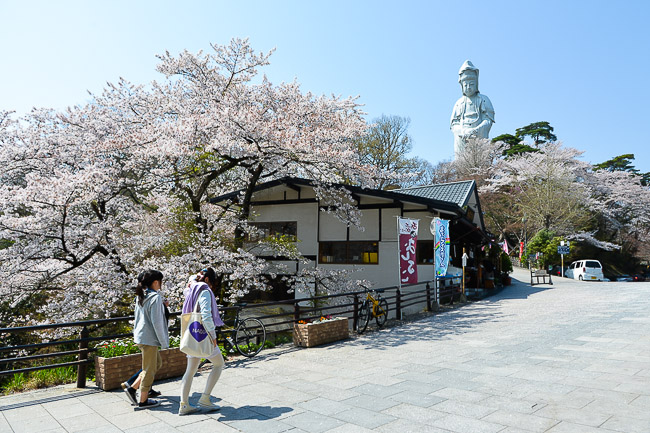

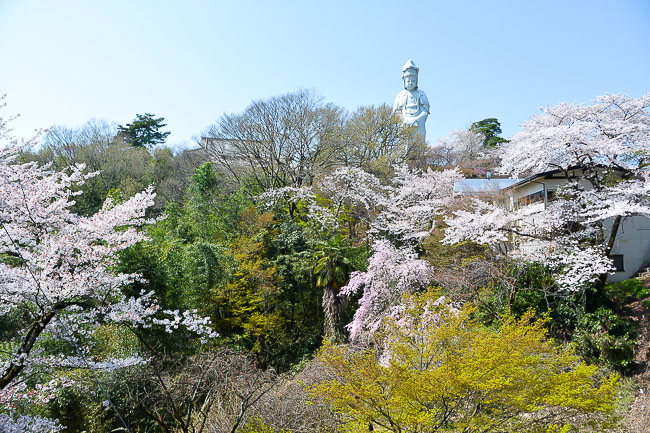
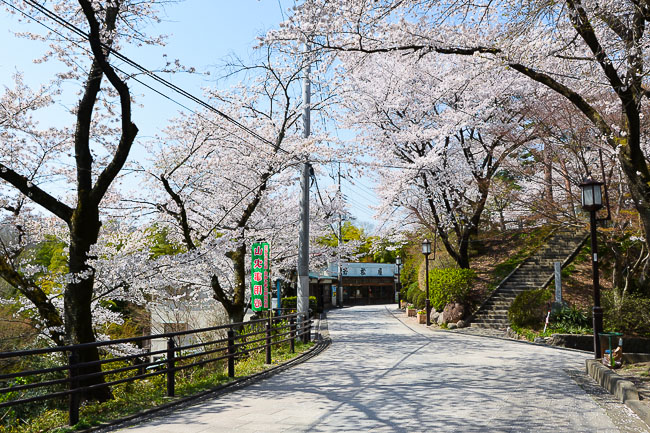
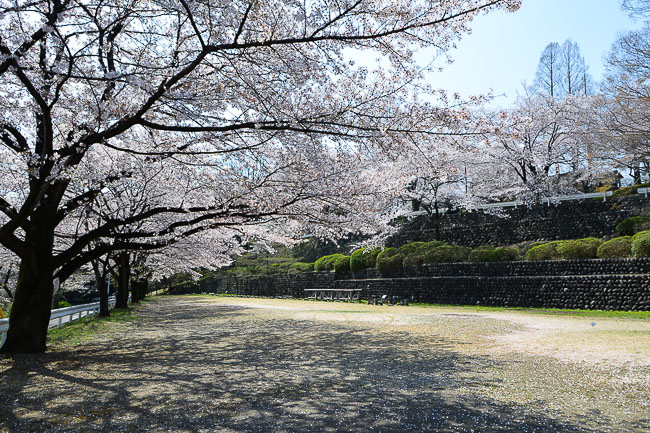
Takasaki Castle Ruins
April 9, 2014 - petals starting to fall
One of the more popular cherry blossom spots in Takasaki is the Castle Ruins Park found at the base of Takasaki City Hall about a 10 minute walk west of Takasaki Station. The park includes the ruins of stone walls and moats that used to be part of a former castle, with about 300 cherry trees planted around the lawns and water. The blossoms along the moats reached full bloom a few days ago and were starting to fall and collect on the surface of the water.
Just next door is Takasaki Park, which offers a lot of open space for hanami parties. The park also has several food stands set up along the walkways selling festival food. Both the castle moats and Takasaki Park be illuminated in the evenings until 22:00.
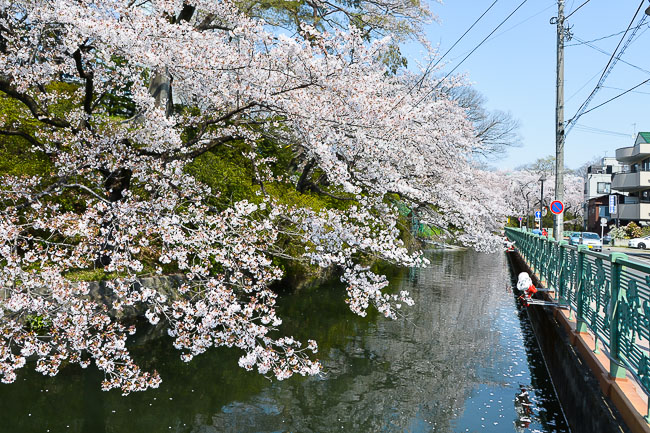
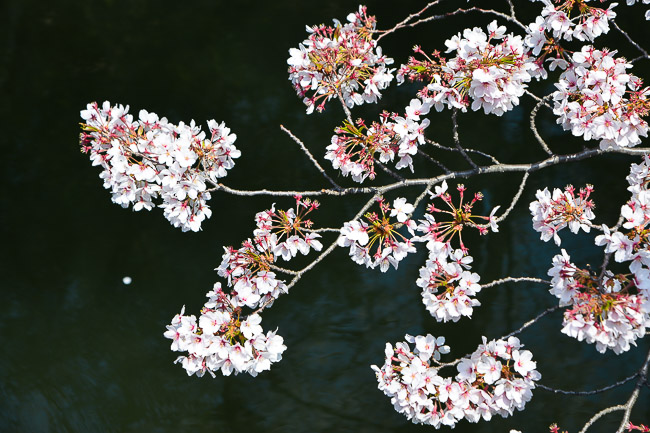
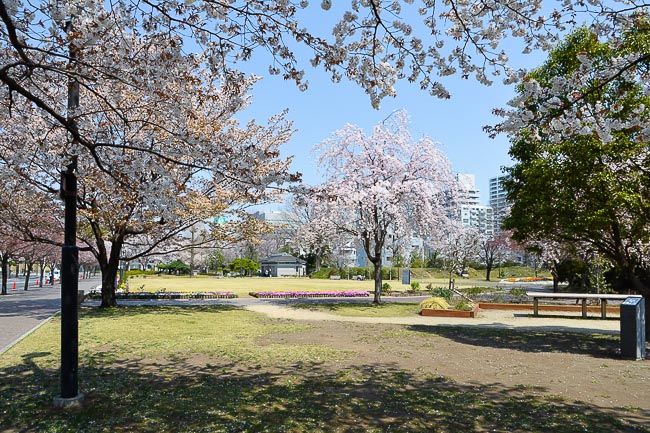
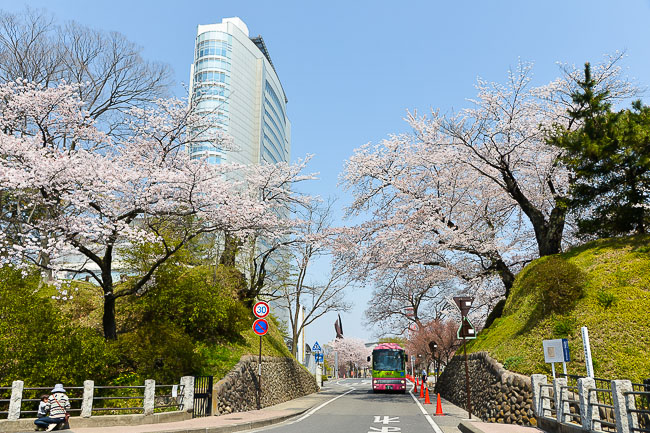
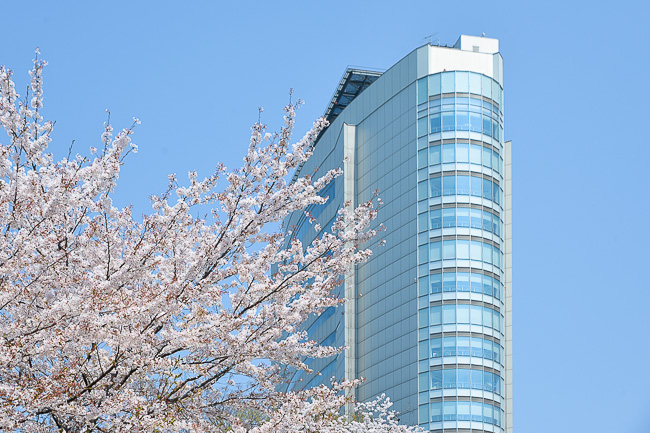
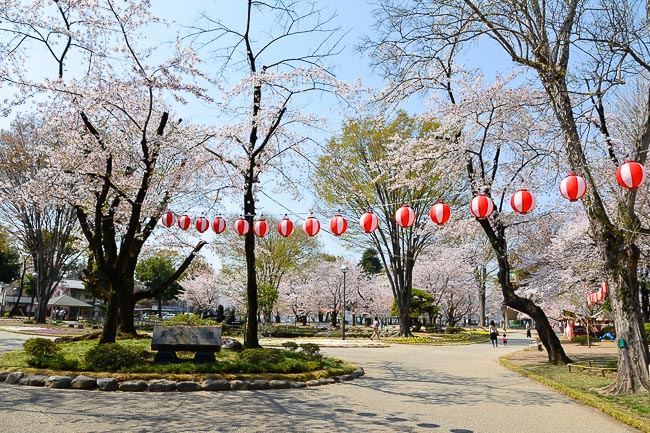
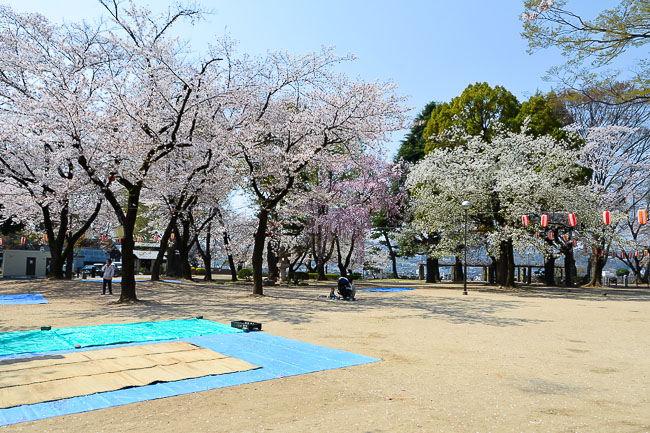
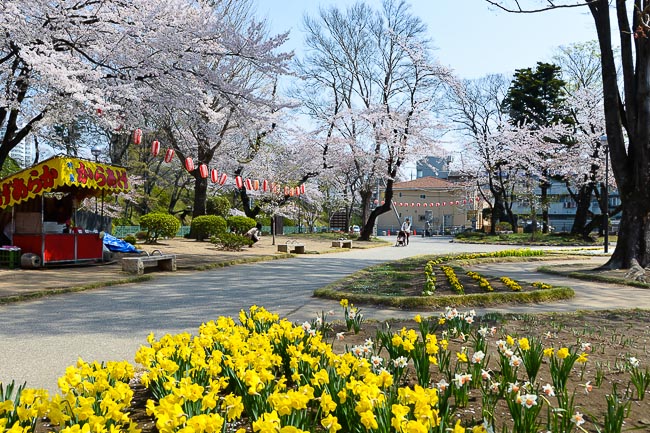
Maebashi Park
April 9, 2014 - petals starting to fall
Next we drove over to Maebashi, the capital city of Gunma Prefecture. Maebashi is accessible by JR trains in about 80 minutes from Tokyo if you take the Joetsu Shinkansen and transfer at Takasaki, or about 2 hours by regular trains. Either way, it is fully covered by the Japan Rail Pass.
One of Maebashi's cherry blossom spots is Maebashi Park, a large city park located between the Gunma Prefectural Government Building and the Green Dome Stadium. The park is served by several bus lines from Maebashi Station (10 minutes, about 200 yen, roughly 1-2 buses per hour), but can also be reached in a pleasant 30 minute walk.
There are about 200 cherry trees planted around the park and lining the canal that runs along the edge of the grounds. Their petals were starting to fall today and some nice cherry blossom storms (hanafubuki) kicked up as the wind blew through the park. There isn't a whole lot of space underneath the trees for hanami parties, but there were several food stands and some very nice looking outdoor restaurants around the northern end of the park.
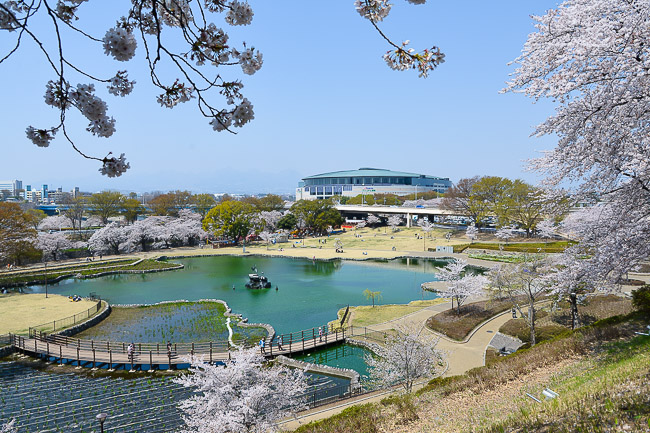
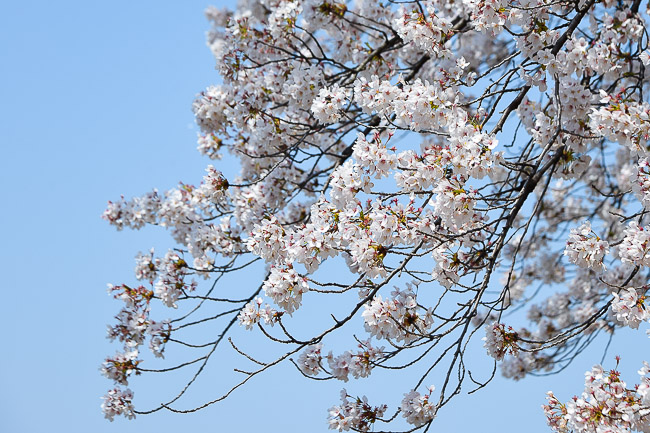
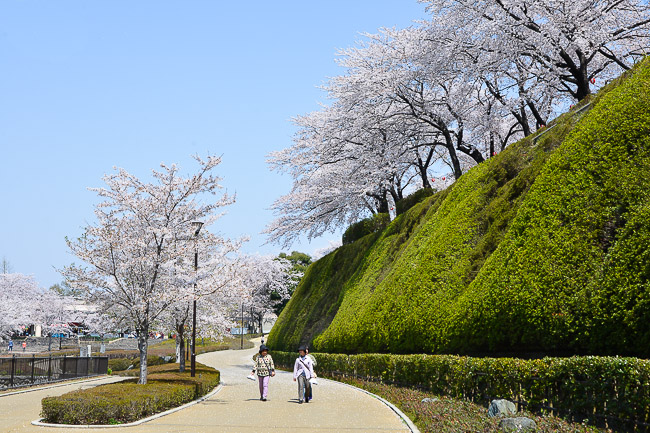
Shikishima Park
April 9, 2014 - petals starting to fall
Just a short drive from Maebashi Park is Shikishima Park, a large public park that includes some of the prefecture's top sporting facilities, including the home stadium of the Kusatsu Thespa professional soccer team. The park is accessible by bus from Maebashi Station (15 minutes, about 250 yen, 1-2 departures per hour). Alternatively, it is about a 10 minute, 1500 yen taxi ride one way.
Towards the northern end of the expansive grounds are about 300 cherry trees planted over lawns and around a large pond. The area is one of the most pleasant spots for hanami partying, especially with today's nice weather and beautiful blossoms. The petals around the park were also just beginning to fall, and I would expect them to remain nice through the weekend.
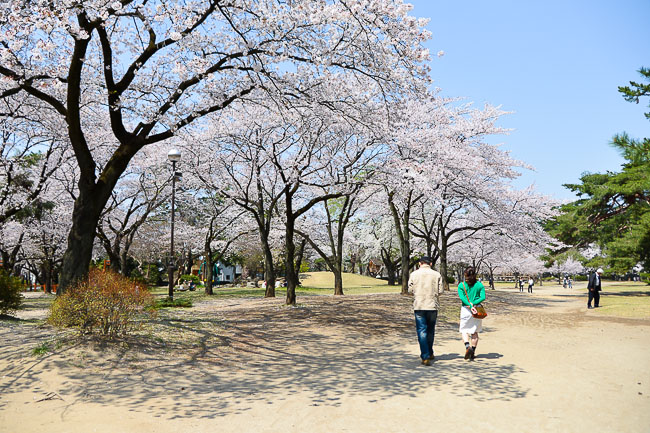
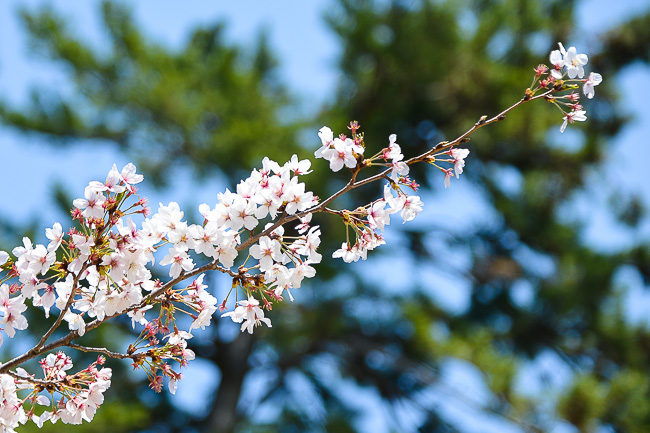
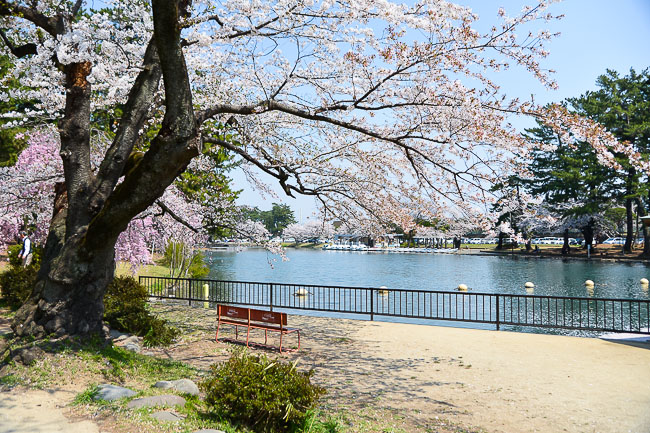
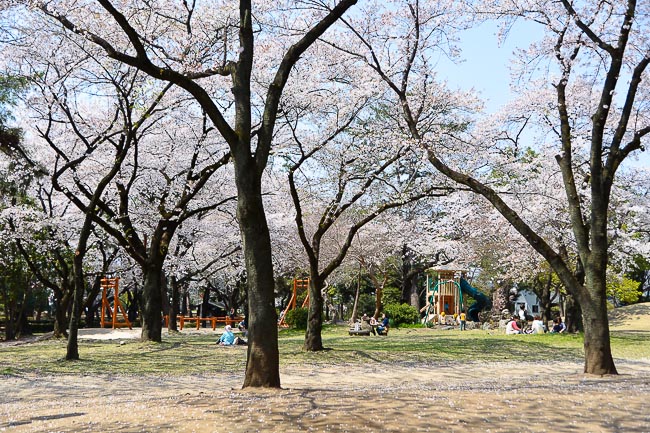
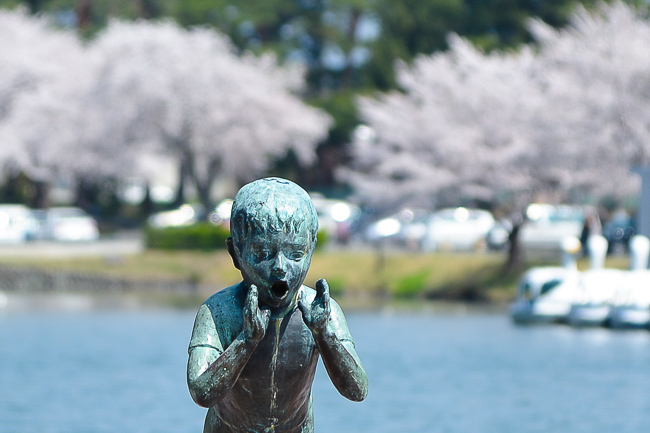
Akagi Senbonzakura
April 9, 2014 - approaching full bloom (50-80%)
Finally, our last stop today was the Akagi Senbonzakura, a two kilometer long, cherry tree lined road located about halfway up Mount Akagi to the north of Maebashi. The Senbonzakura has over 1000 cherry trees planted along it that form a beautiful cherry blossom tunnel. There is also a park area with several hundred more cherry trees planted around its lawns and fields of Shibazakura. A sakura festival will be held at the Senbonzakura from April 5-20. During that time food stands will be set up, and the cherry trees will be illuminated until 21:30.
Due to their elevation, the cherry trees in the Senbonzakura tend to be slightly behind the rest of the region and were still approaching full bloom. With the good weather and moderate temperatures forecast for the next few days, they should reach full bloom by this weekend.
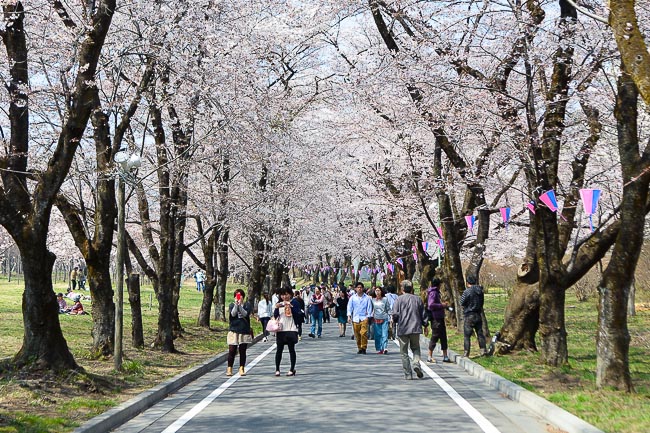
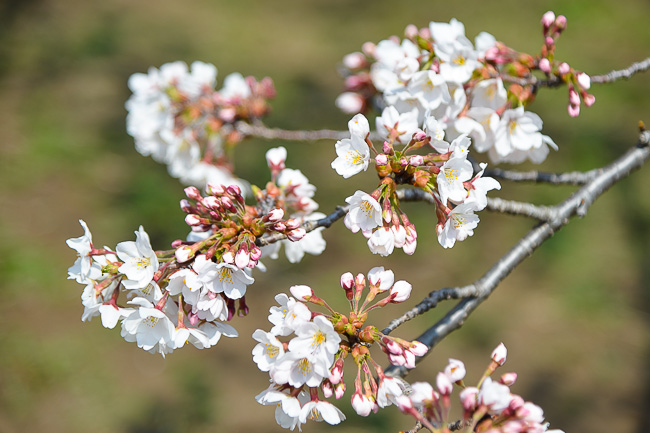
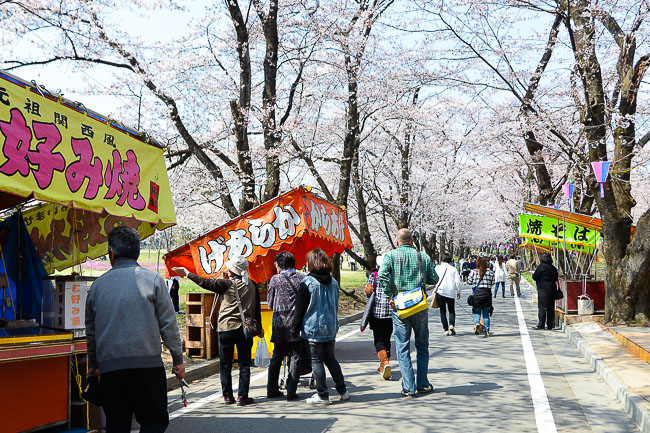
Access to the Akagi Senbon is via JR Maebashi Station (about 1.5 hours from Tokyo via Takasaki, fully covered by the Japan Rail Pass), or Tobu Akagi Station (about 105 minutes, 2160 yen by hourly, direct Tobu limited express trains from Asakusa Station, not covered by the Japan Rail Pass). During the festival season, shuttle buses depart from JR Maebashi Station (everyday) and from Akagi Station (weekends only) to the Senbonzakura. The buses take about 1 hour or 30 minutes respectively and cost 1000 yen for a one day pass good for unlimited rides. Bus info can be found here (Japanese only). Alternatively, the park can be reached by taxi (4000-6000 yen one way) or rental car (about 5000 yen per day from either station).
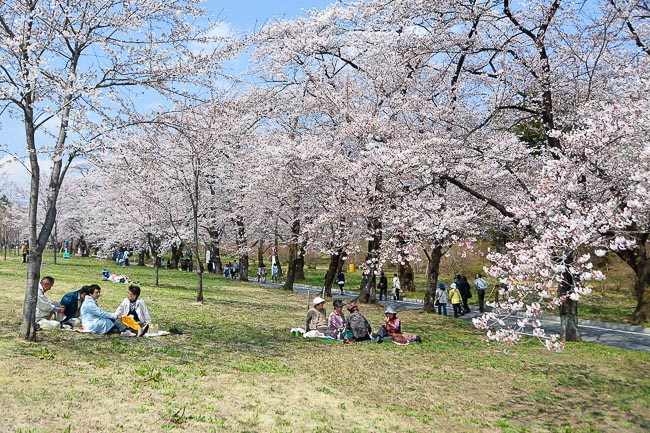
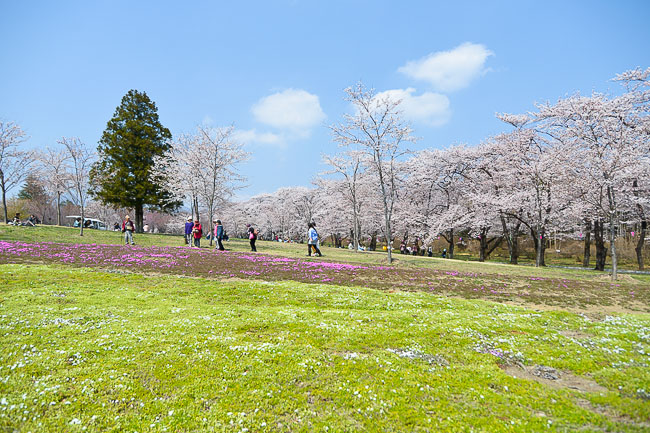
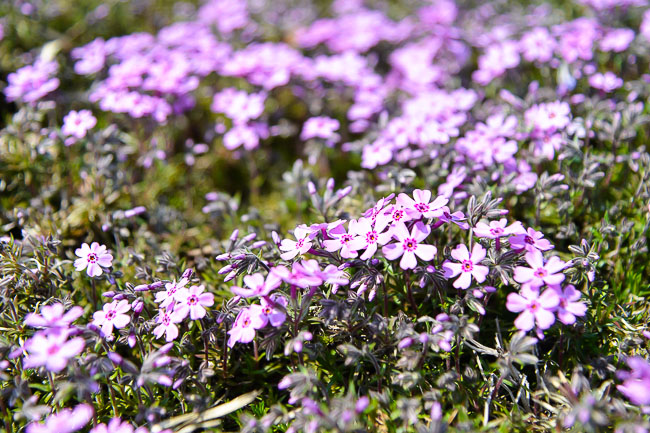
| previous post |
| next post |
Questions? Ask in our forum.